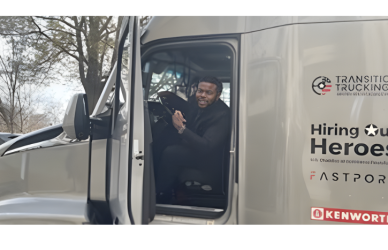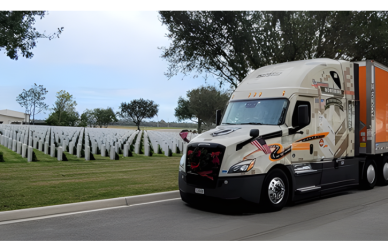The American Transportation Research Institute (ATRI) has launched a groundbreaking study to address a long-standing mystery in the trucking industry: Why is there a lack of interest among women in becoming truck drivers?
Previous research conducted by ATRI has solidified the fact that women make up a mere 8.1% of all U.S. truck drivers, with an even smaller percentage of 2.7% in the long-haul trucking sector. In addition, studies have found that women tend to be safer drivers than their male counterparts.
This new ATRI study aims to uncover the underlying factors that hinder the recruitment of women as truck drivers. By understanding their preferences and needs, the industry hopes to bridge the gap and encourage more women to take on trucking careers.
“Recognizing that certain fleets have substantially more women drivers than typical fleets, motor carriers will be surveyed and interviewed to identify best practices in recruiting and retaining women truck drivers,” ATRI said. “Additional outreach will focus on women executives at motor carriers in order to understand issues and opportunities beyond truck driving.”
“We will also be collaborating with truck driver training schools to identify recruitment and training issues unique to women,” said Dan Murray, ATRI senior vice president.
A recent study has uncovered a significant reason for recruiting female truck drivers – they are statistically safer on the road.
“So, it’s just another reason to be more aggressive than we have been in attracting women to the industry,” Murray said. “Not only is there a huge opportunity in terms of the number of women we could potentially get, but at the end of the day, we’ll have fewer crashes and lower insurance costs.”
ATRI has a pool of successful female driver recruitment stories to draw inspiration. Boyle Transportation, a remarkable example, proudly claims that 40% of its drivers are women. In fact, they have received accolades for their exceptional efforts to attract and hire female drivers.
“It helps because we’re a team operation,” said Laura Duryea, Boyle’s director of driver recruitment and professional growth. “We have a lot of female teams. We have two women who are just acquaintances; we have married women and those who are just friends that are teaming. But I think that having a culture that not only appreciates female input and is open to having discussions with women about what they need, and providing that culture of inclusion, contributes to us being able to maintain that.”
Duryea added, “Having the ability for women to have their voice heard is really important, I think, in the industry because the more that we have women’s input, the more we can not only support women but also provide an environment for them to feel safe and supported as professional drivers. Even all of our advertising has women in them.”
Recruitment of truck drivers is becoming a top priority, as evident from sessions at the American Trucking Associations Management Conference & Exhibition. Groups like Women In Trucking Association and ATA’s Women In Motion (WIM) are pushing for more female drivers behind the wheel.
WIM is launching a membership program and creating a booklet specifically designed for female independent contractors. Group adviser Brenda Neville, president of the Iowa Motor Truck Association, shared this exciting news at an MCE session.
“We engaged in conversations with our entire council, a diverse group of 34 remarkable women, to ensure that we are strategically dividing, conquering, and most importantly, poised to make waves in our industry,” Neville said.
Source: Transport Topics











